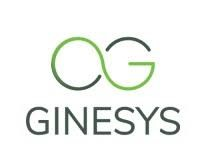How Point-of-Sale Data and Advanced Analytics Can Help Reduce Inventory and Improve Vendor Performance

In today's fast-paced retail environment, managing inventory and fostering strong relationships with vendors are more important than ever. Retailers and vendors must work closely together to ensure proper stock levels, timely shipments, and effective sales strategies. One of the most effective ways to achieve these goals is by leveraging Point-of-Sale (POS) data to provide real-time insights into sales performance and inventory levels. Retailers and vendors can use this data to streamline operations, reduce excess inventory, improve vendor performance, and enhance the overall customer experience.
While the practice of sharing POS data with vendors has been around for some time, advancements in technology, such as Retail POS Analytics and integrated systems, have made it more valuable and actionable than ever before. This blog will explore how POS data, along with new technologies like Ginesys, is transforming the way retailers and vendors collaborate to improve inventory management, vendor performance, and operational efficiency.

Leverage Real-Time POS Data for Smarter Decisions
The Role of POS Data in Retail-Vendor Collaboration
Retailers are increasingly recognizing the value of sharing POS data with their vendors. This data provides visibility into real-time sales trends, stock levels, and product performance, enabling vendors to make informed decisions about inventory management, order fulfillment, and production planning. By sharing this data, retailers can help their vendors understand which products are performing well, which are underperforming, and which require replenishment.
Vendors, in turn, benefit from this transparency by having better insights into their products' sales performance, which allows them to make more accurate production and shipping plans. This collaboration leads to several key benefits for both retailers and vendors:
- Improved Inventory Management: Vendors can make data-driven decisions regarding inventory restocking, reducing excess inventory and stockouts.
- Better Demand Forecasting: With real-time sales data, vendors can more accurately forecast demand, leading to more timely deliveries and better alignment between production and sales.
- Increased Efficiency: Real-time insights allow vendors to react more quickly to changes in consumer demand and retailer requirements, streamlining the entire supply chain.
As POS data becomes more accessible and integrated into retail operations, both retailers and vendors can achieve better coordination and efficiency, driving improved business outcomes.

Retailer Portals: The Traditional Approach to Sharing POS Data
Retailers have long relied on online portals to share POS data with their vendors. These portals typically provide up-to-date supply chain information, including sales trends, stock levels, and order histories. While these portals have been a significant step forward in enabling collaboration between retailers and vendors, they come with several challenges.
The Challenges with Retailer Portals
- Multiple Portals for Multiple Retailers: Vendors often work with dozens of retailers, each with its own portal. This creates a cumbersome process for vendors who must log into each portal individually to collect and analyze data. The time and effort required to navigate various platforms is inefficient, and valuable insights can be missed in the process.
- Manual Data Collection: While retailer portals provide access to POS data, vendors still need to manually collect, aggregate, and analyze the data from different sources to understand how their products are performing across various retailers. This process can be time-consuming and prone to errors.
- Limited Analytical Capabilities: Many retailer portals offer basic data access, but they lack the advanced analytical capabilities required to generate actionable insights. Vendors may struggle to derive meaningful conclusions from raw data without the right tools and expertise.

Optimize Stock Levels & Sales Performance with Ginesys POS Analytics.
The Shift to Third-Party Analytics Services
To overcome the limitations of retailer portals, many vendors have turned to third-party analytics services. These services provide a more sophisticated, centralized solution for collecting and analyzing POS data across multiple retailers.
Software-as-a-Service (SaaS) platforms, in particular, have gained popularity for their ability to deliver real-time POS data without the need for significant infrastructure investments. SaaS solutions, like those offered by Ginesys, provide a powerful, cloud-based platform that integrates POS data from various retail sources, giving vendors a comprehensive view of product performance across multiple channels.
The key benefits of SaaS-based solutions include:
- Reduced Setup Time: With no need for complex infrastructure or on-premise installations, SaaS platforms can be set up quickly and easily.
- Real-Time Data Access: Vendors can access up-to-date sales data, allowing them to make timely decisions about inventory management, production, and shipping.
- Advanced Analytics Tools: SaaS solutions offer advanced analytical features, such as trend analysis, demand forecasting, and performance benchmarking, enabling vendors to derive actionable insights from POS data.
- Cost Efficiency: SaaS-based solutions typically operate on a subscription model, meaning retailers and vendors can access valuable data analytics at a lower cost than building and maintaining a custom portal.
Ginesys Retail POS Analytics: A Game-Changer for Vendors and Retailers
Ginesys, with its advanced Retail POS Analytics suite, is revolutionizing the way retailers and vendors share and use POS data. Ginesys integrates seamlessly with its ERP and POS systems, enabling real-time data flow and collaboration between vendors and retailers.
Key Features of Ginesys Retail POS Analytics
- Real-Time Data Insights
Ginesys provides up-to-the-minute data on sales performance, inventory levels, and product movement. Vendors can access this data instantly to understand how their products are performing across different retail channels. This visibility enables vendors to plan their production, restocking, and delivery schedules more accurately. - Advanced Reporting and Analytics
With Ginesys, vendors can access advanced reporting tools that go beyond basic POS data. The platform offers customized reports that analyze key performance indicators (KPIs), track sell-through rates, monitor vendor scorecards, and identify trends that impact inventory and sales performance. - Demand Forecasting and Inventory Optimization
One of the most powerful features of Ginesys is its ability to predict future demand using historical data, seasonal trends, and other relevant factors. Vendors can leverage this feature to optimize inventory levels, reduce excess stock, and minimize stockouts, ultimately improving vendor performance and reducing inventory costs for both parties. - Vendor Scorecarding and Accountability
Ginesys helps retailers track and manage vendor performance through scorecarding, evaluating factors such as on-time deliveries, fill rates, and product quality. By providing vendors with clear performance metrics, retailers can encourage accountability, identify areas for improvement, and foster more productive relationships. - Seamless Integration Across Platforms
Ginesys integrates with multiple retail platforms and supply chain systems, allowing vendors to gather data from different retailers in one central location. This integration reduces the need for manual data entry and streamlines the process of collecting insights across various sales channels.
How Ginesys Enhances Collaboration Between Retailers and Vendors
The shift from traditional retailer portals to advanced ERP and analytics platforms like Ginesys marks a significant evolution in how retailers and vendors collaborate. By providing real-time, actionable insights into sales and inventory performance, Ginesys helps vendors optimize their supply chains, improve on-time deliveries, and increase fill rates.
For retailers, Ginesys enhances vendor performance by improving visibility into their supply chain and ensuring that products are available when customers demand them. Retailers can also ensure that their vendors are held accountable through vendor scorecarding, driving continuous improvement and fostering long-term partnerships.

Transform Your Retail-Vendor Collaboration with Ginesys
The Benefits for Retailers and Vendors
- Improved Inventory Management: With better visibility into product performance, vendors can optimize stock levels, reducing excess inventory and improving sell-through rates.
- Enhanced Vendor Relationships: By sharing data transparently and setting clear performance expectations, retailers can build stronger, more collaborative relationships with their vendors.
- Faster, More Accurate Replenishment: With demand forecasting and real-time data, vendors can restock products more quickly and accurately, ensuring that retailers never run out of popular items.
- Cost Savings: Ginesys’ integrated solutions allow both retailers and vendors to reduce inefficiencies, minimize stockouts, and avoid overstocking, leading to significant cost savings.
The collaboration between retailers and vendors is evolving, thanks to the power of POS data and advanced analytics tools like Ginesys. By leveraging real-time data, vendors can optimize their supply chains, reduce inventory costs, and improve their performance. At the same time, retailers can ensure that they have the right products in stock, improve vendor accountability, and foster stronger business relationships.
As the retail industry continues to grow more data-driven, solutions like Ginesys will play a critical role in helping vendors and retailers work together more efficiently, ultimately leading to better inventory management, improved vendor performance, and greater profitability for all parties involved. For more details, get in touch with Ginesys today!
